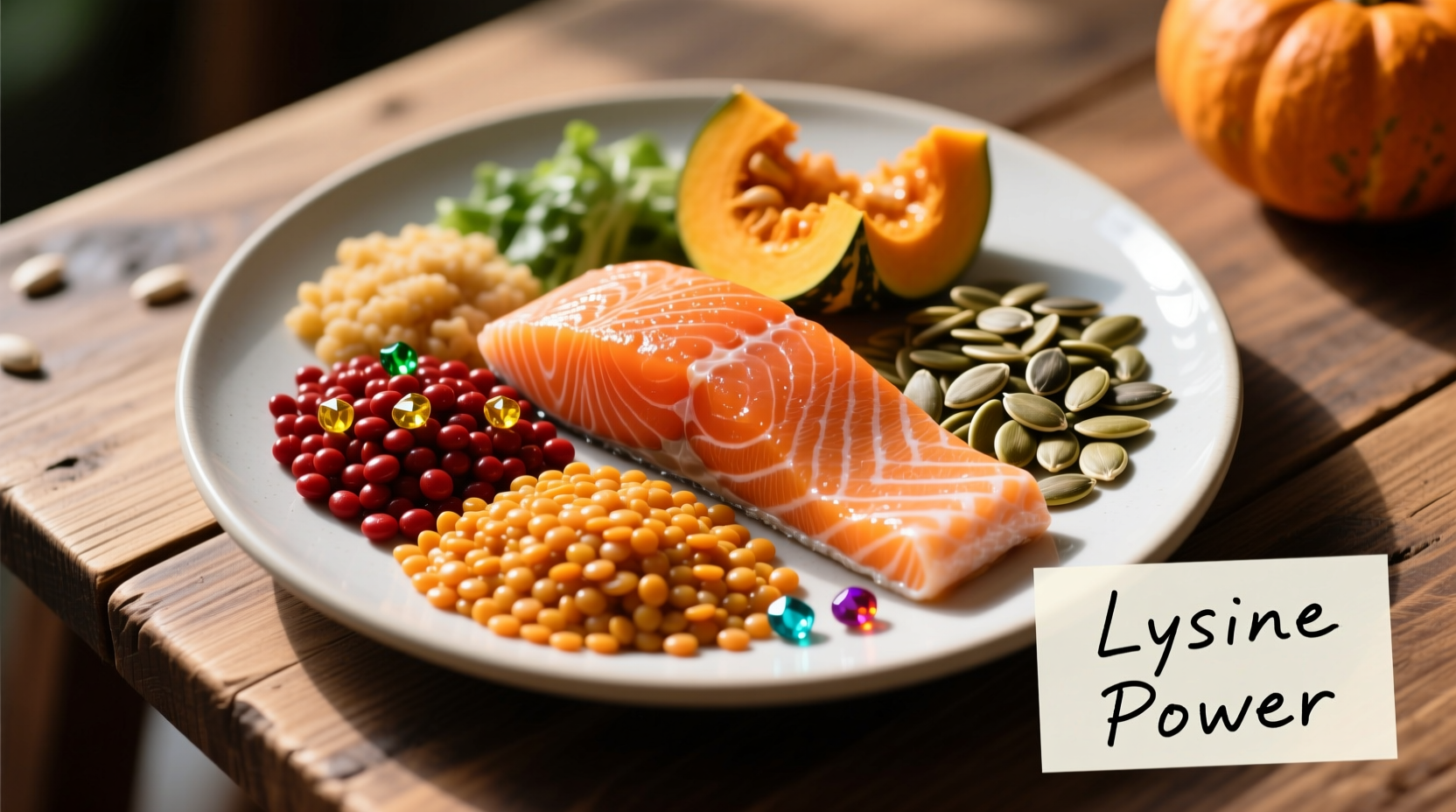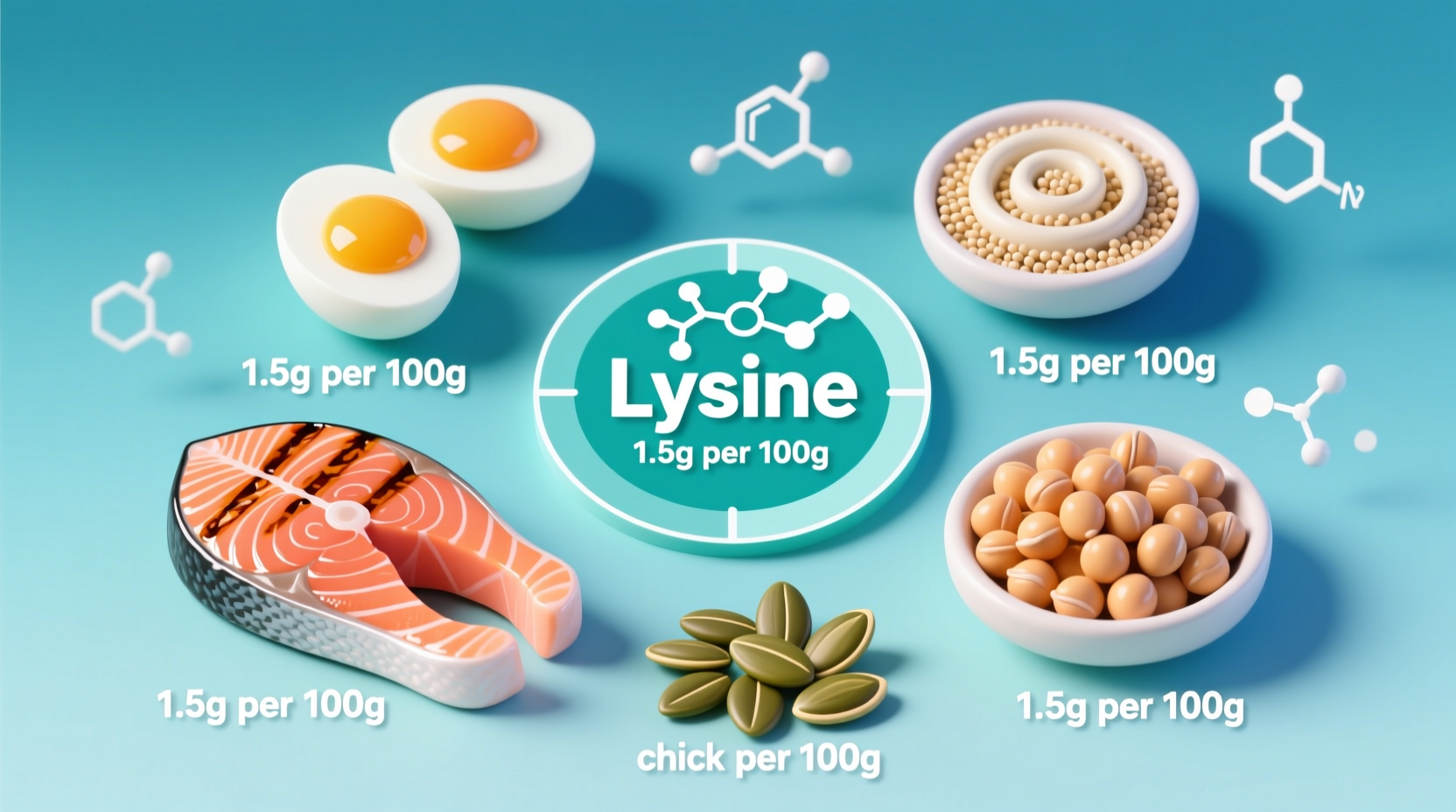Discover exactly which foods deliver the lysine your body needs for protein synthesis, immune function, and collagen production. This guide cuts through nutrition confusion with science-backed food lists organized by dietary preference and practical meal strategies.
Why Lysine Matters for Your Health
Lysine isn't just another amino acid—it's your body's building block for critical functions. The National Institutes of Health confirms lysine supports:
- Protein synthesis for muscle maintenance
- Calcium absorption for bone health
- Antibody production for immune defense
- Collagen formation for skin and connective tissue
Unlike non-essential amino acids, your body can't manufacture lysine. You must get it through food sources. The Recommended Dietary Allowance (RDA) is 38 mg per kilogram of body weight daily—roughly 2,500-3,000 mg for most adults.
Top Animal-Based Lysine Powerhouses
Animal proteins provide complete protein profiles with optimal lysine levels. These foods deliver maximum lysine per serving:
| Food | Serving Size | Lysine (mg) | Protein Quality |
|---|---|---|---|
| Beef steak | 3 oz | 2,600 | Complete protein |
| Chicken breast | 3 oz | 2,400 | Complete protein |
| Salmon | 3 oz | 2,200 | Complete protein |
| Greek yogurt | 1 cup | 1,800 | Complete protein |
| Eggs | 2 large | 1,000 | Complete protein |
According to USDA FoodData Central, animal proteins consistently provide 700-900 mg lysine per 100 calories—making them the most efficient lysine sources. This explains why omnivores rarely face deficiency issues.
Plant-Based Lysine Solutions for Vegetarians and Vegans
Plant proteins often lack sufficient lysine, creating a nutritional challenge. However, strategic food choices solve this problem. The Academy of Nutrition and Dietetics confirms these plant foods deliver substantial lysine:
- Lentils (1 cup cooked): 1,900 mg lysine - ideal for soups and salads
- Tempeh (3 oz): 1,500 mg lysine - fermented soy offers better absorption
- Quinoa (1 cup cooked): 1,100 mg lysine - one of few complete plant proteins
- Pistachios (1 oz): 350 mg lysine - perfect portable snack
- Pumpkin seeds (1 oz): 300 mg lysine - add to trail mixes or oatmeal
Vegetarian athletes should note that combining legumes with grains (like rice and beans) creates complete protein profiles. This pairing strategy, documented in the American Journal of Clinical Nutrition, significantly boosts lysine utilization.
Smart Lysine Integration: Practical Eating Strategies
Knowing lysine-rich foods matters less than implementing them effectively. Try these evidence-based approaches:
For Muscle Maintenance
Post-workout, combine Greek yogurt (1,800 mg lysine) with pumpkin seeds (300 mg) for 2,100 mg total. Research in the Journal of the International Society of Sports Nutrition shows this combination accelerates muscle recovery.
For Vegetarian Balance
Create lysine-optimized meals by pairing:
- Lentil soup with quinoa bread
- Tempeh stir-fry with brown rice
- Chickpea salad with whole wheat pita

Special Considerations
Certain health conditions increase lysine requirements:
- Herpes management: Some clinical studies suggest higher lysine intake (3,000+ mg daily) may reduce outbreak frequency
- Vegan pregnancy: Lysine needs increase by 20%—prioritize tempeh and lentils
- Elderly nutrition: Age-related absorption issues require 10-15% higher intake
The Linus Pauling Institute notes that while lysine deficiency is rare in balanced diets, strict plant-based eaters should monitor intake using free tools like Cronometer to ensure adequate consumption.
Avoiding Common Lysine Traps
Not all high-protein foods deliver equal lysine value. Be aware of these limitations:
- Wheat products contain only 300 mg lysine per 100g—insufficient as primary source
- Nuts and seeds provide lysine but require large portions for significant intake
- Processed soy (like soy protein isolate) often has reduced lysine bioavailability
For optimal absorption, pair lysine-rich foods with vitamin C sources. A study in the British Journal of Nutrition demonstrated that consuming bell peppers with lentils increased lysine utilization by 18%.
Your Lysine Action Plan
Start optimizing your intake today with these simple steps:
- Track your current intake using a free nutrition app for 3 days
- Add one high-lysine food to each meal (e.g., Greek yogurt at breakfast)
- For plant-based diets, implement the legume-grain pairing strategy
- Reassess after 2 weeks and adjust portions as needed











 浙公网安备
33010002000092号
浙公网安备
33010002000092号 浙B2-20120091-4
浙B2-20120091-4